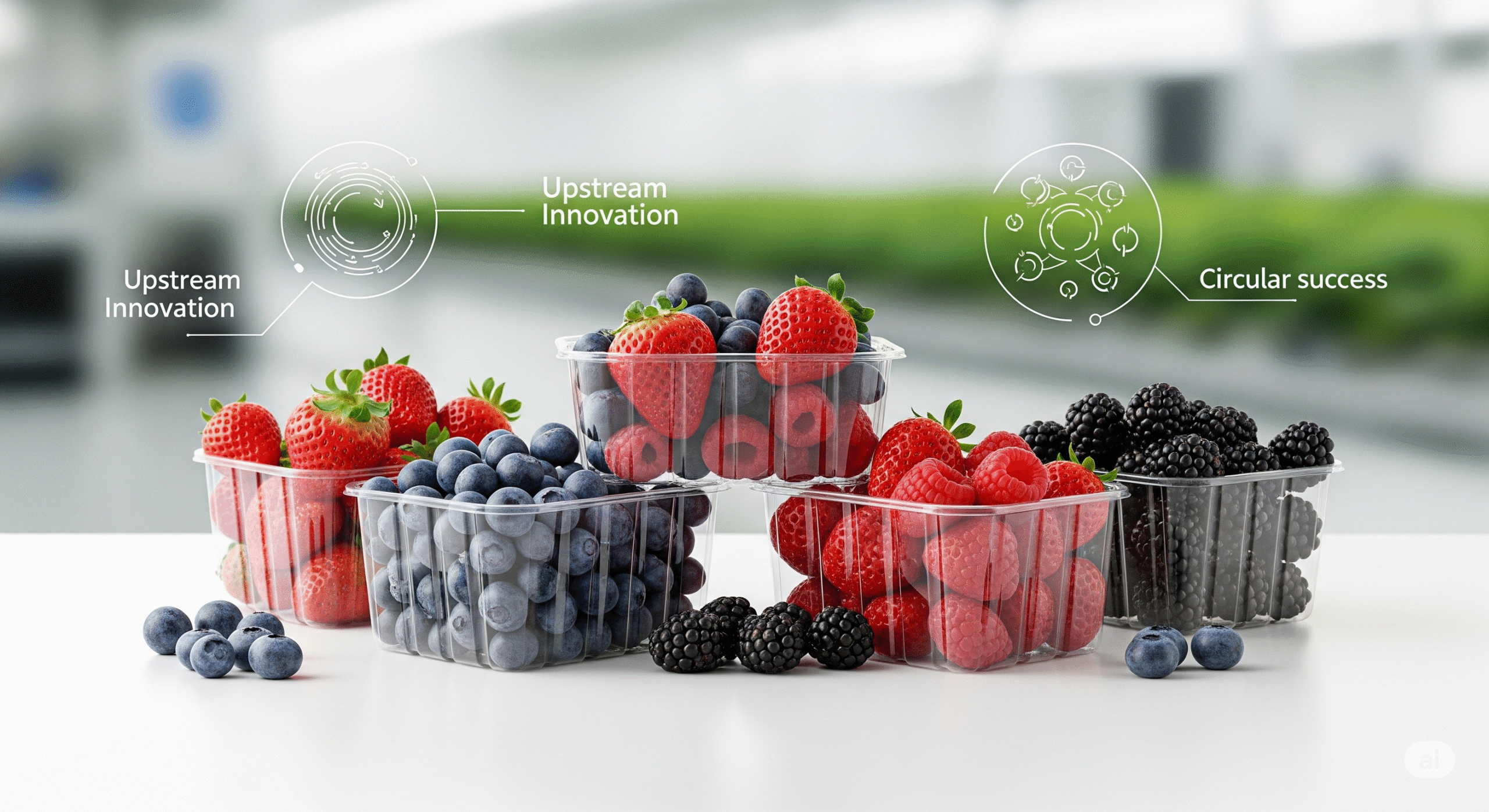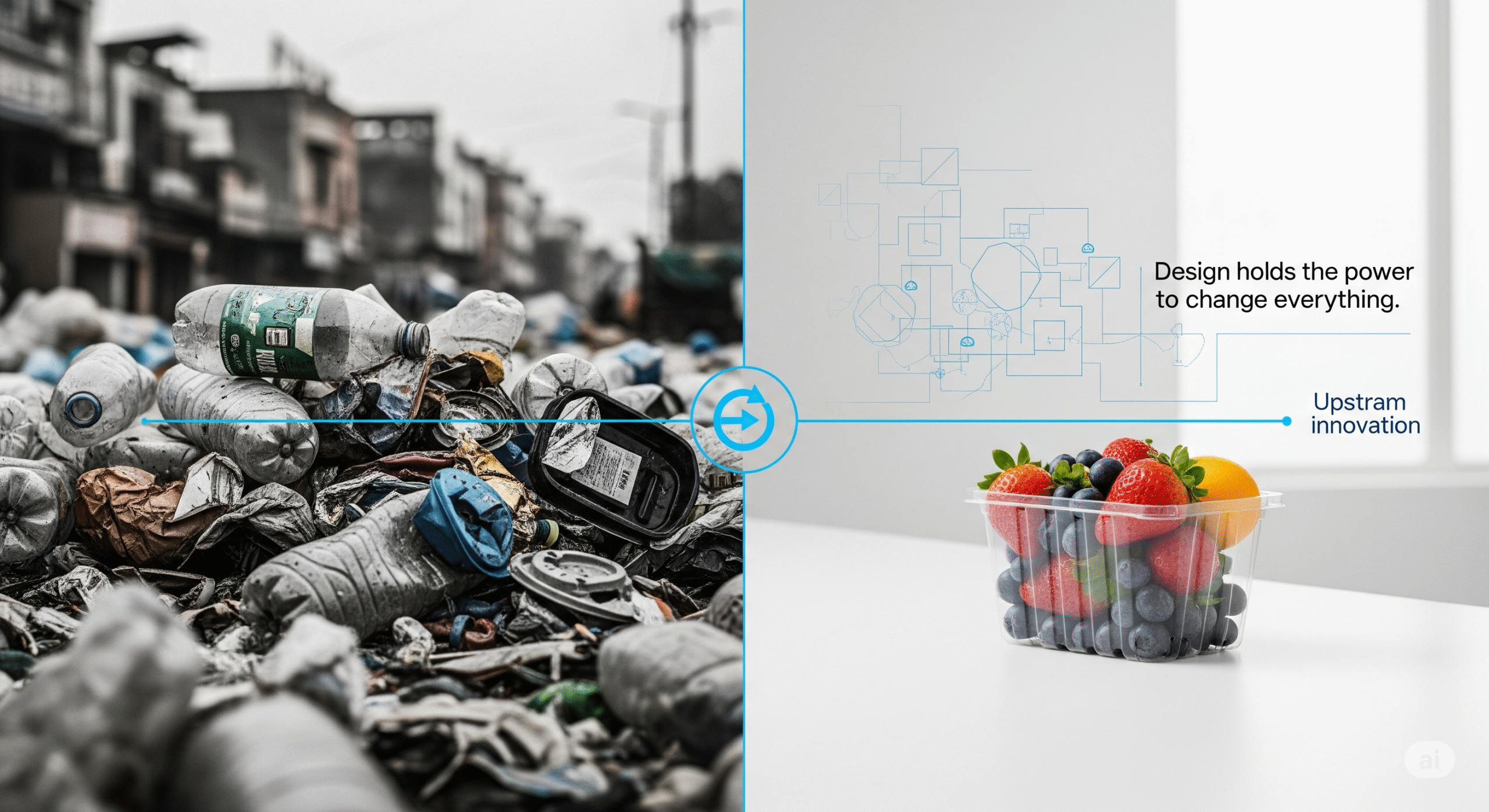
Did you know only 9% of plastic waste is recycled globally? Plastics power the modern world—from keeping food fresh to protecting medical supplies to supporting global logistics — but the way we make and dispose of them is fundamentally flawed. Our global economy still runs on a linear “take-make-dispose” model, where convenience and cost often outweigh sustainability. The result? Overflowing landfills, polluted oceans, and mounting pressure on already strained waste systems. In a country like India, millions of tons of plastic waste are generated each year, stretching infrastructure to the breaking point. Consumer preferences are also shifting: more than 70% of Indian buyers now say they prefer sustainable products, and governments are responding with strict mandates for recycling and recycled content. What used to be optional is now essential.
The problem is, traditional solutions can’t keep up. Mechanical recycling, the most common form, is riddled with challenges—plastic types are mixed, contaminated, and often incompatible with existing processes. Meanwhile, alternative materials like bio-based plastics sound promising but frequently require special conditions to break down—conditions missing in most cities and towns. Worse, they often come with high cost premiums that make them inaccessible at scale. It’s no surprise that the recycling rate has barely budged despite decades of effort. The real issue is that we’re trying to fix waste after it’s been created, rather than preventing it altogether.
That’s where upstream innovation comes in—and it changes everything.

Here’s the Kicker: Design Holds the Power to Change Everything
Upstream innovation reimagines how plastics are made, used, and reused. It’s not just a tweak—it’s a complete mindset shift. The idea is simple: design out waste before it ever becomes a problem. That starts with the materials themselves. Using recycled polymers like rPET isn’t just a sustainable move—it’s a strategic one. rPET taps into existing waste streams and can be processed using current infrastructure. It reduces dependency on virgin resin, cuts emissions, and helps manufacturers meet regulatory targets without rebuilding their systems from scratch.
But it doesn’t stop at material choice. Mono-material packaging—where only one type of plastic is used—makes recycling dramatically easier and more efficient. Add in smart packaging features like digital traceability, and you’ve got a system that not only reduces contamination but actually improves material recovery. Some closed-loop systems using these tools have seen contamination rates drop by nearly 40%. Design-for-recycling also means fewer complex shapes, fewer colors, and fewer barriers for sorting technology to overcome.
These small changes add up to big results. Manufacturers adopting upstream principles are seeing 20–40% reductions in material costs, significant drops in logistics expenses, and better alignment with recycling mandates. EPR compliance becomes easier and cheaper when packaging is built to be recycled from the beginning. AI-powered sorting technologies are pushing recovery rates above 90%, even in waste-heavy environments. For businesses operating in fast-growing sectors like food service, fresh produce in quick commerce & e-commerce, these gains translate into real resilience.
Best of all, these strategies align with market momentum. Consumers are more informed and more demanding. Regulators are raising the bar. And the companies that adapt early are the ones that will thrive.

No One Succeeds Alone: AVI’s Role in the Circular Revolution
None of this can be done in isolation. The circular economy is a system—and systems only work when everyone plays their part. In India, for example, informal waste workers collect up to 80% of all plastic waste, playing a vital yet often invisible role. Their efforts deliver recycling rates that far exceed global averages, yet they operate without the support or structure they deserve. Formalizing their work, investing in local waste infrastructure, and integrating them into mainstream supply chains isn’t just ethical—it’s essential for progress.
At AVI Global Plast, we’re not just talking about circularity—we’re building it. Upstream innovation is at the heart of everything we do. Our rPET packaging solutions are crafted from 100% post-consumer recycled content and designed for full recyclability, minimizing environmental impact while maximizing functionality. Whether it’s punnet trays for fresh produce, tamper-proof packaging for pharmacy, or custom formats for industrial goods, we engineer every solution to be lightweight, scalable, and compliant with current and upcoming regulations.
From simplified trays to intelligent closures, we reduce waste at every step.Our strategy focuses on removing unnecessary materials without compromising strength or safety. And our material circulation model ensures every product we design fits seamlessly into India’s recycling systems—whether managed by municipalities or private partners.
We also work closely with recyclers, waste collectors, and coalitions like the India Plastics Pact to advance infrastructure, share knowledge, and scale impact. From guiding brands on EPR compliance to helping retailers transition to mono-material formats, we see our role as an enabler of change. With tightening global regulations, rising resin costs, and growing demand for sustainable packaging, manufacturers can’t afford to wait. The circular economy isn’t the future—it’s already here. And it’s rewarding those who lead.
This is more than an environmental initiative. It’s a business imperative. It’s a social opportunity. It’s a design challenge. And it’s a chance to redefine value itself—not as something extracted and discarded, but as something created, reused, and regenerated.
We invite you to be part of this shift. If you’re ready to transform your packaging strategy and lead your industry toward circular success, partner with us. Visit avigloplast.com or email info@avigloplast.com to explore how we can help you turn waste into worth—and design a future that works for everyone.

Way cool, some valid points! I appreciate you making this article available, the rest of the site is also high quality. Have a fun.
I’d have to examine with you here. Which is not one thing I usually do! I take pleasure in reading a post that may make folks think. Additionally, thanks for permitting me to comment!